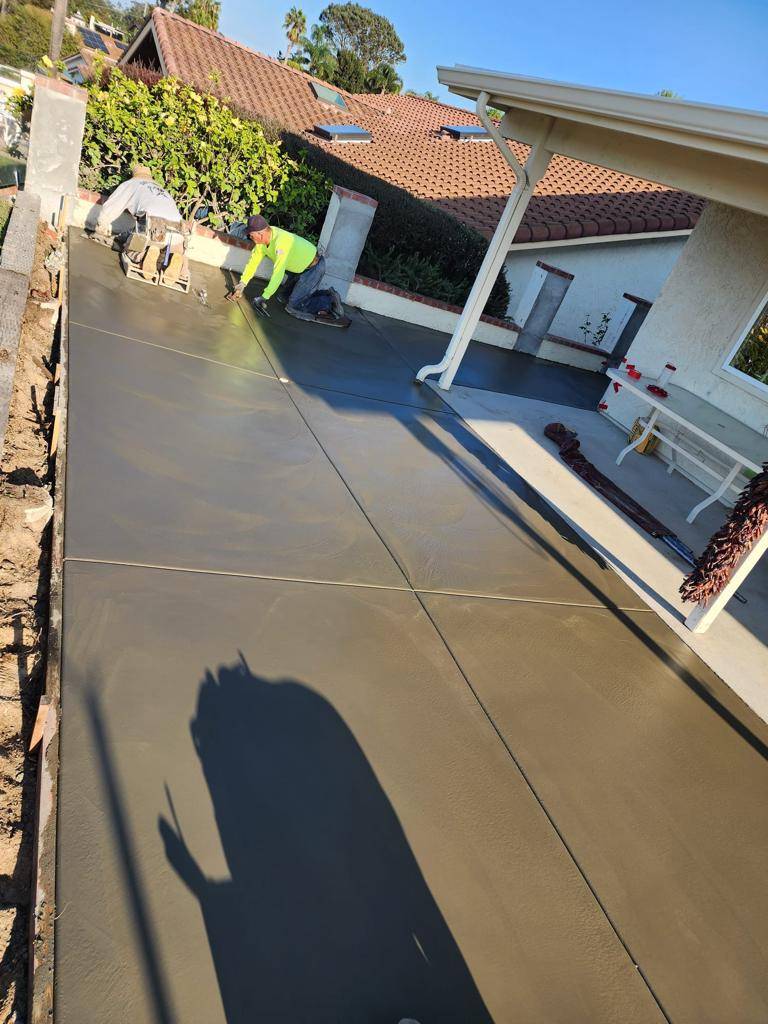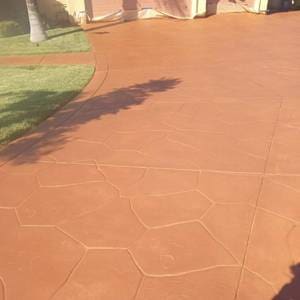
Concrete Slab Installation Services Include the following services:
Concrete slab installation services are a cornerstone of many construction projects. These slabs, offering a robust and dependable base for everything from driveways to patios and foundations, underscore the importance of understanding the concrete slab installation process. This understanding can be a critical factor in the success of your construction project, and this guide is designed to make that process easy to follow and comprehend.
Understanding Concrete Slabs
Concrete slabs, as flat, horizontal surfaces made of poured concrete, are the bedrock for various structures, including homes, garages, and commercial buildings. Their renowned strength, durability, and versatility make them a secure and reliable choice. They can effortlessly support heavy loads and withstand even the harshest weather conditions, instilling confidence in your construction project.
Benefits of Concrete Slabs
Concrete slabs are not just necessary for many construction projects but also offer many benefits. Their incredible durability, resistance to rot, warping, and pests, and minimal maintenance make them popular. With proper care, they can last for decades. Their versatility allows them to be customized to fit different design preferences.
Planning Your Concrete Slab Installation
Before embarking on the installation, it’s crucial to plan meticulously. This ensures the project runs smoothly and efficiently, leaving you feeling prepared and organized. Here are some critical steps in the planning phase:
Determine the Purpose: Identify why you need a concrete slab. Is it for a driveway, patio, or foundation? Knowing the purpose will help you determine the slab’s size, thickness, and reinforcement needs.
Choose the Location:
- Select a suitable location for your concrete slab.
- Ensure the area is level and has proper drainage.
- Avoid areas prone to flooding or with unstable soil.
Obtain Permits: Check with your local authorities to see if you need permits for the installation. Failing to obtain necessary permits can result in fines or project delays.
Gather Materials: Prepare all the needed materials, including concrete mix, reinforcement materials, and tools. Having everything ready before starting will save time and effort.
Preparing the Site
Site preparation is a critical step in concrete slab installation. Proper preparation ensures a stable and durable slab. Follow these steps to prepare the site:
Clear the Area: Remove any vegetation, rocks, or debris from the site. Use a shovel or excavator to clear the area and create a level surface.
Excavate the Site: Excavate the site to the required depth. The depth will depend on the slab’s purpose and local building codes. Typically, you must excavate 6 to 8 inches deep for a driveway or patio.
Compact the Soil: Use a compactor to compact the soil. Compacted soil provides a stable base and prevents the slab from settling or cracking.
Add a Gravel Base: Spread a layer of gravel over the compacted soil. The gravel base improves drainage and further stabilizes the slab. A rake levels the gravel and compacts it using a compactor.
Building the Formwork
Formwork is a temporary structure that holds the concrete in place until it sets. Building sturdy formwork is essential for a well-shaped slab. Here’s how to create the formwork:
Measure and Cut: Measure the slab’s dimensions and cut wooden boards accordingly. The boards should be at least 2 inches thick and as long as the slab’s perimeter.
Assemble the Formwork:
- Assemble the boards to create a frame around the excavation site.
- Secure the corners with nails or screws.
- Ensure the formwork is level and square using a level and measuring tape.
Stake the Formwork: Drive wooden stakes into the ground along the outside of the formwork. Attach the stakes to the formwork with screws or nails. This provides additional support and prevents the formwork from shifting.
Reinforcing the Slab
Reinforcement adds strength to the concrete slab. It helps prevent cracking and ensures the slab can support heavy loads. Reinforcing typically involves using steel rebar or wire mesh. Follow these steps to reinforce the slab:
Cut the Rebar or Mesh: Cut the rebar or wire mesh to fit within the formwork. Ensure there is enough material to cover the entire area.
Place the Reinforcement: Lay the rebar or wire mesh inside the formwork. Keep the reinforcement elevated using rebar chairs or bricks. This ensures it is positioned in the middle of the slab, where it can provide maximum strength.
Secure the Reinforcement: Tie the rebar pieces together using wire ties. This prevents the rebar from shifting during the concrete pour.
Pouring the Concrete
Pouring the concrete is a critical step in the installation process. Proper pouring techniques ensure a strong and durable slab. Here’s how to pour the concrete:
Mix the Concrete: If you use a ready-mix truck, the concrete will arrive pre-mixed. If mixing on-site, follow the manufacturer’s instructions for the correct proportions of cement, sand, gravel, and water.
Pour the Concrete:
- Start pouring the concrete into the formwork.
- Use a shovel or hoe to spread the concrete evenly.
- Work quickly to prevent the concrete from setting before it’s fully poured.
Vibrate the Concrete: Use a concrete vibrator to remove air bubbles and ensure the concrete fills all voids. Vibrating the concrete also helps it settle and become more compact.
Screed the Surface: Use a screed board to level the concrete surface. Move the screed back and forth in a sawing motion to remove excess concrete and create a smooth surface.
Finishing the Slab
Finishing the slab involves smoothing and shaping the surface. Proper finishing techniques enhance the slab’s appearance and durability. Follow these steps to finish the slab:
Float the Surface: Use a bull float to smooth the surface of the concrete. This helps remove any remaining imperfections and creates a flat, even surface.
Edge the Slab: Use an edging tool to round the edges. This prevents the edges from chipping and gives the slab a finished look.
Trowel the Surface: Use a trowel to create a smooth, polished finish. Consider using a broom to create a textured finish for a non-slip surface.
Cure the Concrete: Curing ensures the concrete reaches its maximum strength.
Maintaining Your Concrete Slab
Proper maintenance extends the life of your concrete slab. Regular maintenance prevents damage and keeps the slab looking its best. Here are some tips for maintaining your concrete slab:
Clean Regularly: Sweep and wash the slab regularly to remove dirt and debris. This prevents stains and keeps the slab looking clean.
Seal the Surface: Apply a concrete sealer to protect the slab from water, stains, and wear. Reapply the sealer every few years for continued protection.
Repair Cracks: Inspect the slab for cracks and repair them promptly. Use a concrete crack filler to prevent small cracks from spreading.
Avoid Heavy Loads: Avoid placing heavy loads on the slab, especially during the first few months after installation. This prevents stress and potential damage.
Concrete slab installation is a valuable service. Contact us if you are looking for a reliable contractor; California Clean and Seal provides a strong, durable foundation for various structures. Our team understands the process, from planning and preparation to pouring and finishing, and we ensure all our clients have a successful installation project. Schedule your fee estimate – We can help with all your concrete installation slab needs. Tel: 619-818-0113
or request a free estimate. We servicing all San Diego areas.


